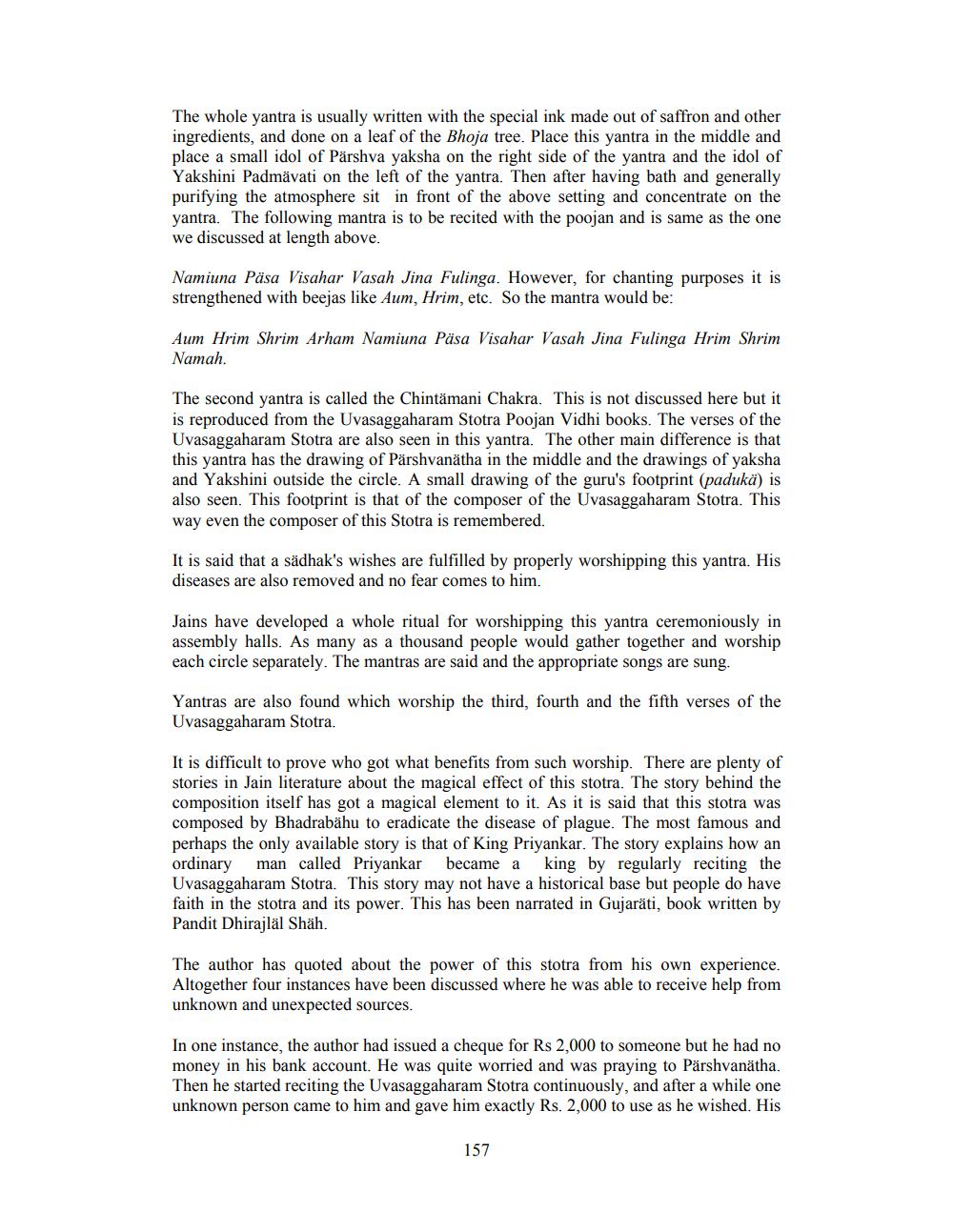________________
The whole yantra is usually written with the special ink made out of saffron and other ingredients, and done on a leaf of the Bhoja tree. Place this yantra in the middle and place a small idol of Pärshva yaksha on the right side of the yantra and the idol of Yakshini Padmavati on the left of the yantra. Then after having bath and generally purifying the atmosphere sit in front of the above setting and concentrate on the yantra. The following mantra is to be recited with the poojan and is same as the one we discussed at length above.
Namiuna Päsa Visahar Vasah Jina Fulinga. However, for chanting purposes it is strengthened with beejas like Aum, Hrim, etc. So the mantra would be:
Aum Hrim Shrim Arham Namiuna Päsa Visahar Vasah Jina Fulinga Hrim Shrim Namah.
The second yantra is called the Chintamani Chakra. This is not discussed here but it is reproduced from the Uvasaggaharam Stotra Poojan Vidhi books. The verses of the Uvasaggaharam Stotra are also seen in this yantra. The other main difference is that this yantra has the drawing of Pärshvanatha in the middle and the drawings of yaksha and Yakshini outside the circle. A small drawing of the guru's footprint (paduka) is also seen. This footprint is that of the composer of the Uvasaggaharam Stotra. This way even the composer of this Stotra is remembered.
It is said that a sädhak's wishes are fulfilled by properly worshipping this yantra. His diseases are also removed and no fear comes to him.
Jains have developed a whole ritual for worshipping this yantra ceremoniously in assembly halls. As many as a thousand people would gather together and worship each circle separately. The mantras are said and the appropriate songs are sung.
Yantras are also found which worship the third, fourth and the fifth verses of the Uvasaggaharam Stotra.
It is difficult to prove who got what benefits from such worship. There are plenty of stories in Jain literature about the magical effect of this stotra. The story behind the composition itself has got a magical element to it. As it is said that this stotra was composed by Bhadrabähu to eradicate the disease of plague. The most famous and perhaps the only available story is that of King Priyankar. The story explains how an ordinary man called Priyankar became a king by regularly reciting the Uvasaggaharam Stotra. This story may not have a historical base but people do have faith in the stotra and its power. This has been narrated in Gujarati, book written by Pandit Dhirajläl Shäh.
The author has quoted about the power of this stotra from his own experience. Altogether four instances have been discussed where he was able to receive help from unknown and unexpected sources.
In one instance, the author had issued a cheque for Rs 2,000 to someone but he had no money in his bank account. He was quite worried and was praying to Pärshvanätha. Then he started reciting the Uvasaggaharam Stotra continuously, and after a while one unknown person came to him and gave him exactly Rs. 2,000 to use as he wished. His
157




